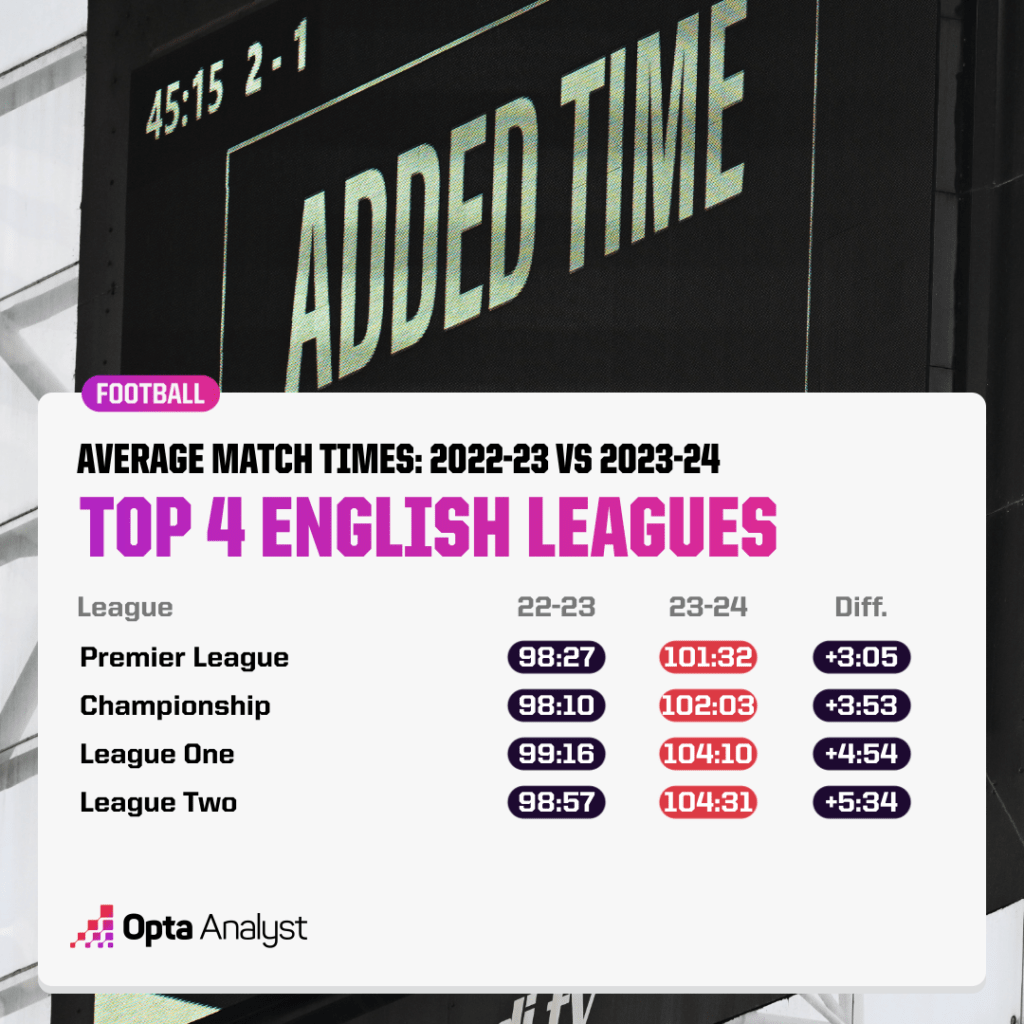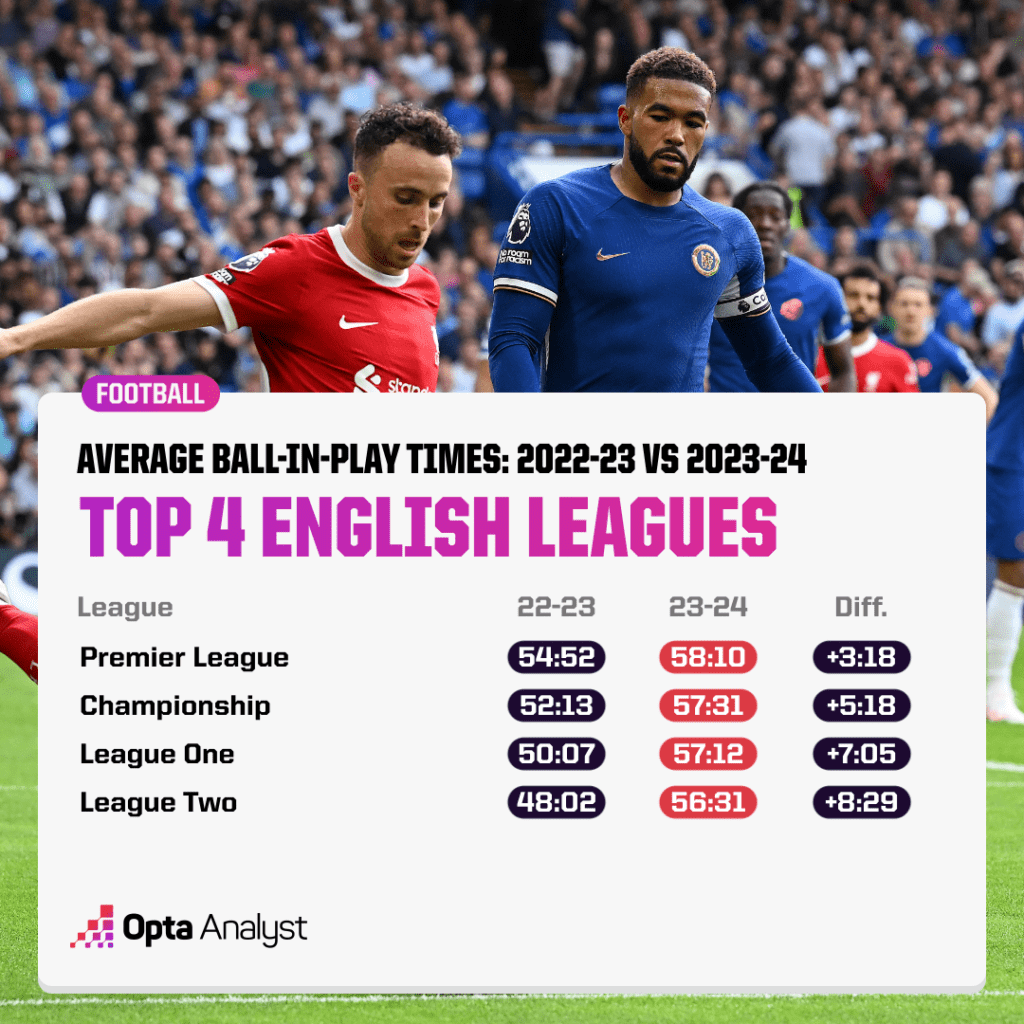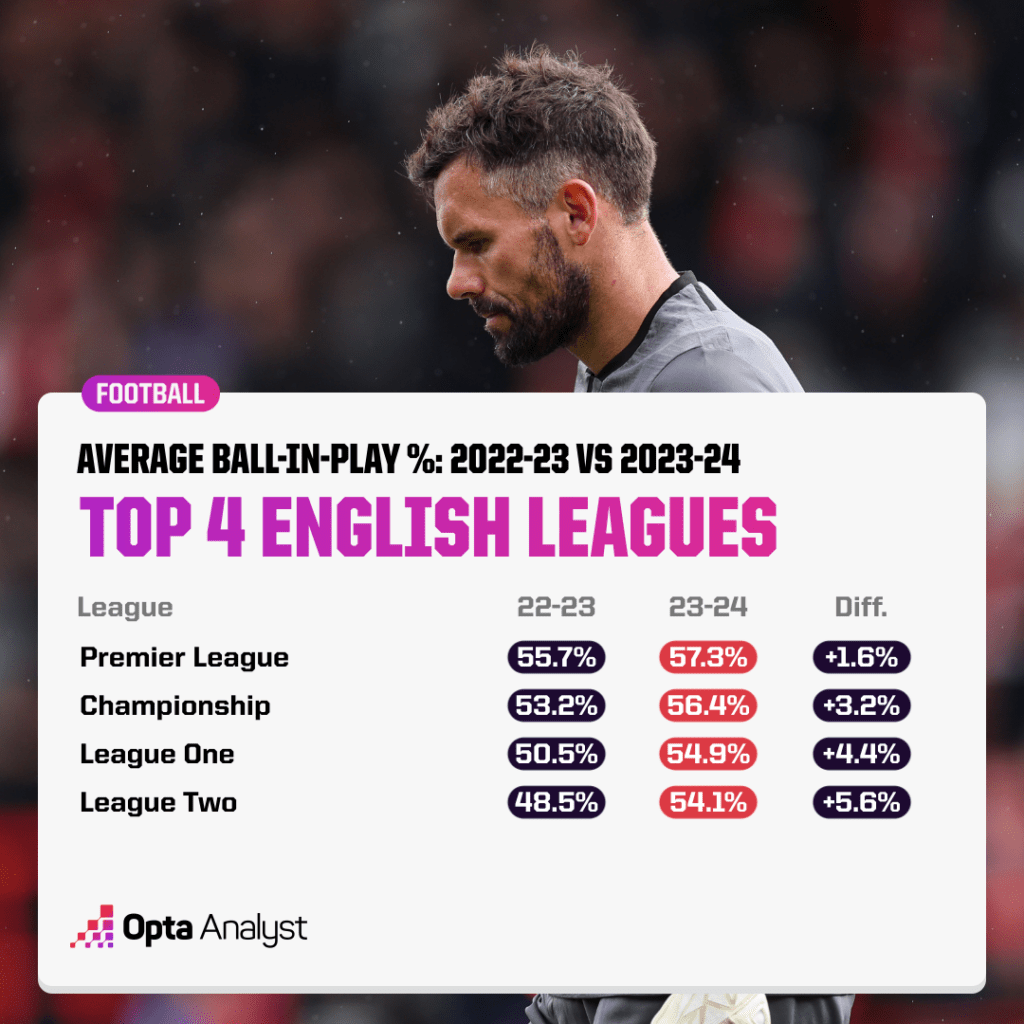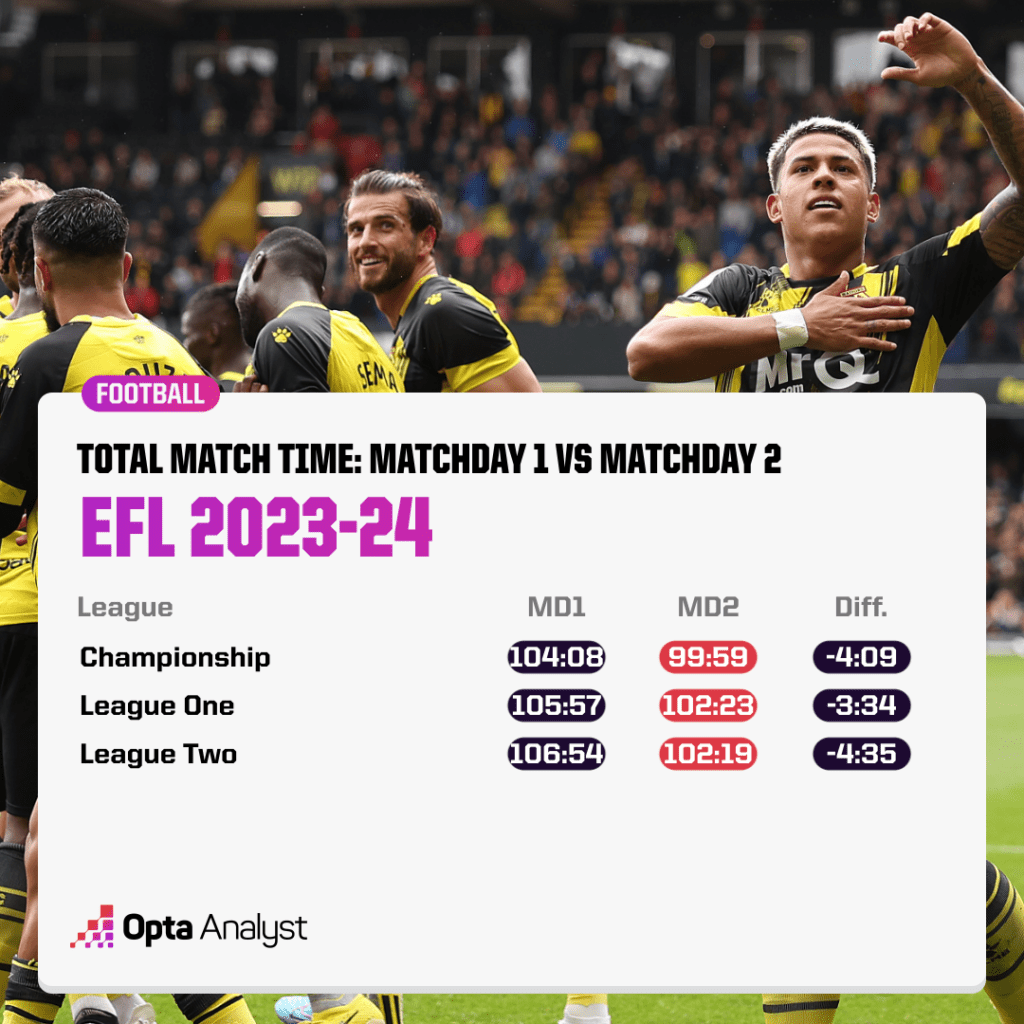One of the biggest talking points in English football at the moment is centred around the length of matches.
Referees in the Premier League and EFL have adopted a new approach to timekeeping in the 2023-24 campaign. According to the EFL themselves, in line with the most recent IFAB guidance, officials have been tasked with ensuring a more accurate calculation of additional time alongside an improvement in the amount of time the ball is in play.
The most notable impact on the opening two weekends of action is long periods of additional time, as referees start to add on the exact time lost for events like goals, substitutions and injuries.
Once a rare event, matches up and down the country are now commonly ticking over the 100-minute mark.
But are we actually seeing more football? We use the Opta data to find out.
How Long Are Matches Now Lasting?
Before we start, it’s important to acknowledge that we’re dealing with a very limited data set.
We’ve had just nine matches in the Premier League thus far, 24 in the Championship and League One, and 23 in League Two. That’s 80 overall, compared to the 2,051 in our dataset from 2022-23 (including play-offs).
We should be mindful of that when conducting our analysis.
That said, it’s clear matches are running far longer than last season. The total match time for games across all of England’s top four divisions has increased notably compared to 2022-23’s averages.

Premier League games are lasting just over three minutes longer than last season, and that figure jumps to nearly four minutes when comparing the Championship to the prior campaign.
The difference is even starker in League One and League Two.
But we won’t spend too much time here. You’ve watched the games. You’ve seen the added-on time at the end of each period. Games are lasting longer. That’s not the interesting bit.
Are We Seeing More of the Action?
The crucial thing to measure is ball-in-play time. Put simply, how much of a given game is the ball in the field of play?
Well, that too is up across all four divisions in England, ranging from an extra 3m 18s in the Premier League, all the way to a huge 8m 29s in League Two.

The data from League One and League Two is profound. Fans watching League One games are now seeing seven more minutes of action, and that jumps to eight-and-a-half minutes in League Two.
The final piece in the puzzle is to look at the percentage of the total match time that the ball is in play. That’s the real litmus test for whether these new directives are having their desired effect.
There is an important debate to be had around the impact increased playing time has on player welfare. But the initial data – again with the caveat that we’re talking about a small sample size – suggests the new changes are working.
We’ve seen an increase in ball-in-play % across all for divisions, and in some cases a substantial one.

The Premier League’s opening weekend saw the ball in play for 1.6% more of the game than the average across 2022-23. That’s nice. It’s up 3.2% in the Championship, too. Really nice.
But the Premier League was never the biggest culprit. As we’ve remarked in our data comparison between the leagues in the English football pyramid, the problem of “lost time” got more severe as you went down the leagues. And that’s where we’re seeing the biggest improvements.
League One has seen ball-in-play % increase by 4.4% year-on-year, while in League Two the change has been even greater. Fans were seeing the ball in play for less than half of League Two games in 2022-23 (48.5%), but that has risen sharply by 5.6% across the first two weekends.
Are Players Already Adjusting Their Behaviour?
A comparison between Matchday 1 and Matchday 2 in the EFL makes for interesting reading.
In all cases, the total overall match times were substantially lower in MD2. The Championship even saw the average match time tick underneath 100 minutes this weekend.

Are players already understanding that they can’t eat the clock up like they used to?
After clearly making an impact in MD1, are referees becoming slightly more lenient in their interpretation of the rules?
It’s probably too early to tell.
Interestingly, speaking after Liverpool’s 1-1 draw at Chelsea, Jürgen Klopp seemed to suggest the noise around the amount of added-on time will probably die down eventually.
“It was not a problem today for me, to be honest,” the Liverpool manager said. “What was it, first half six minutes? Because of the VAR decisions. And second half, five, I think. That’s a lot but this is a time where we try to sort it like that. I am not sure that will last forever but at the moment it’s like that and we have to deal with it.”
@optaanalyst ⏱️ Seems like YOU can look forward to seeing the ball more in play across the Premier League and EFL this season. #fyp #premierleague #football #foryou #efl #learnontiktok #facts #soccer ♬ original sound – optaanalyst
Whether he’s right or not, time will tell. And when it does, we’ll be here to measure it.
Enjoy this? Subscribe to our mailing list to receive exclusive weekly content. And follow us on Twitter too.
